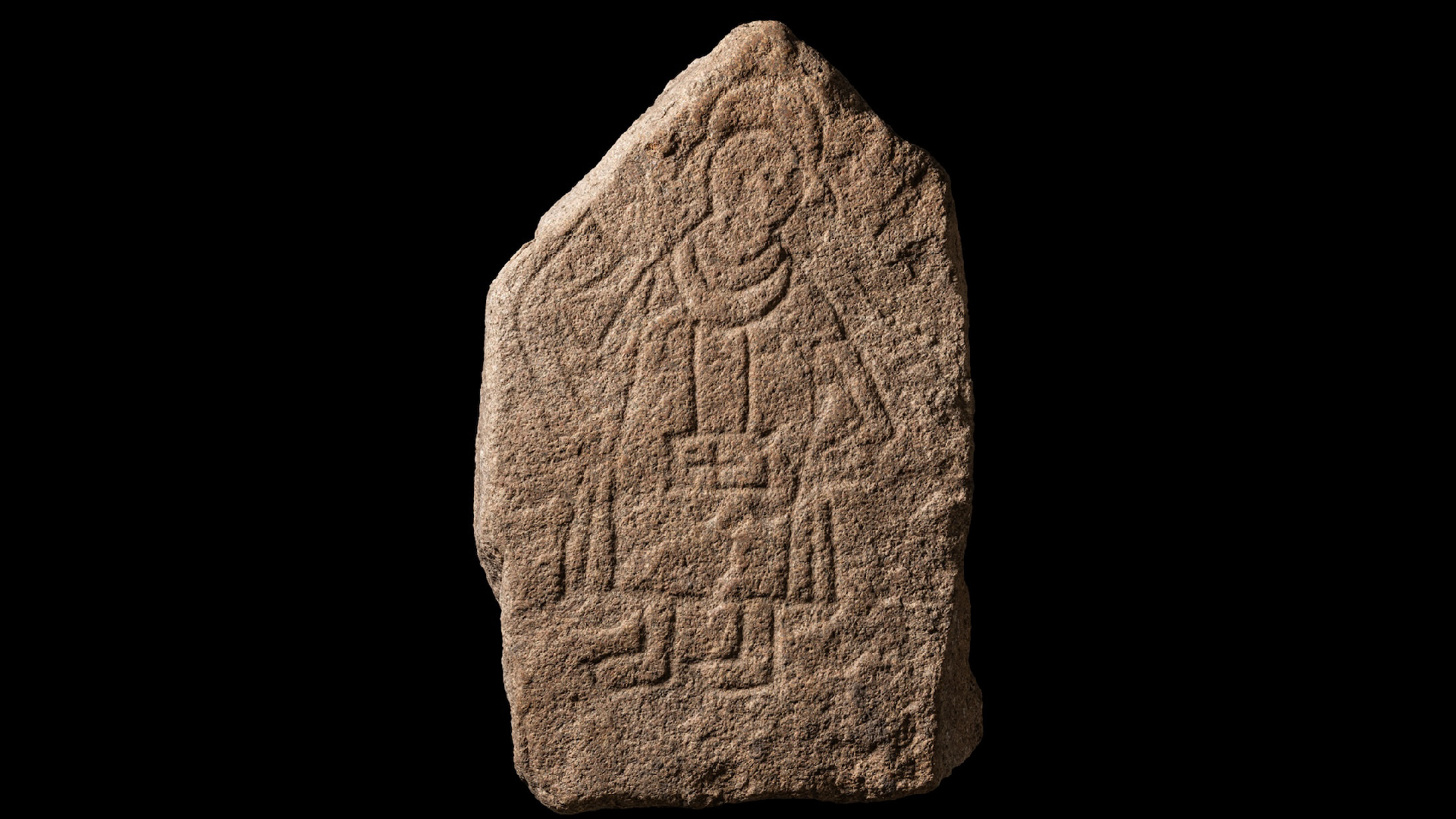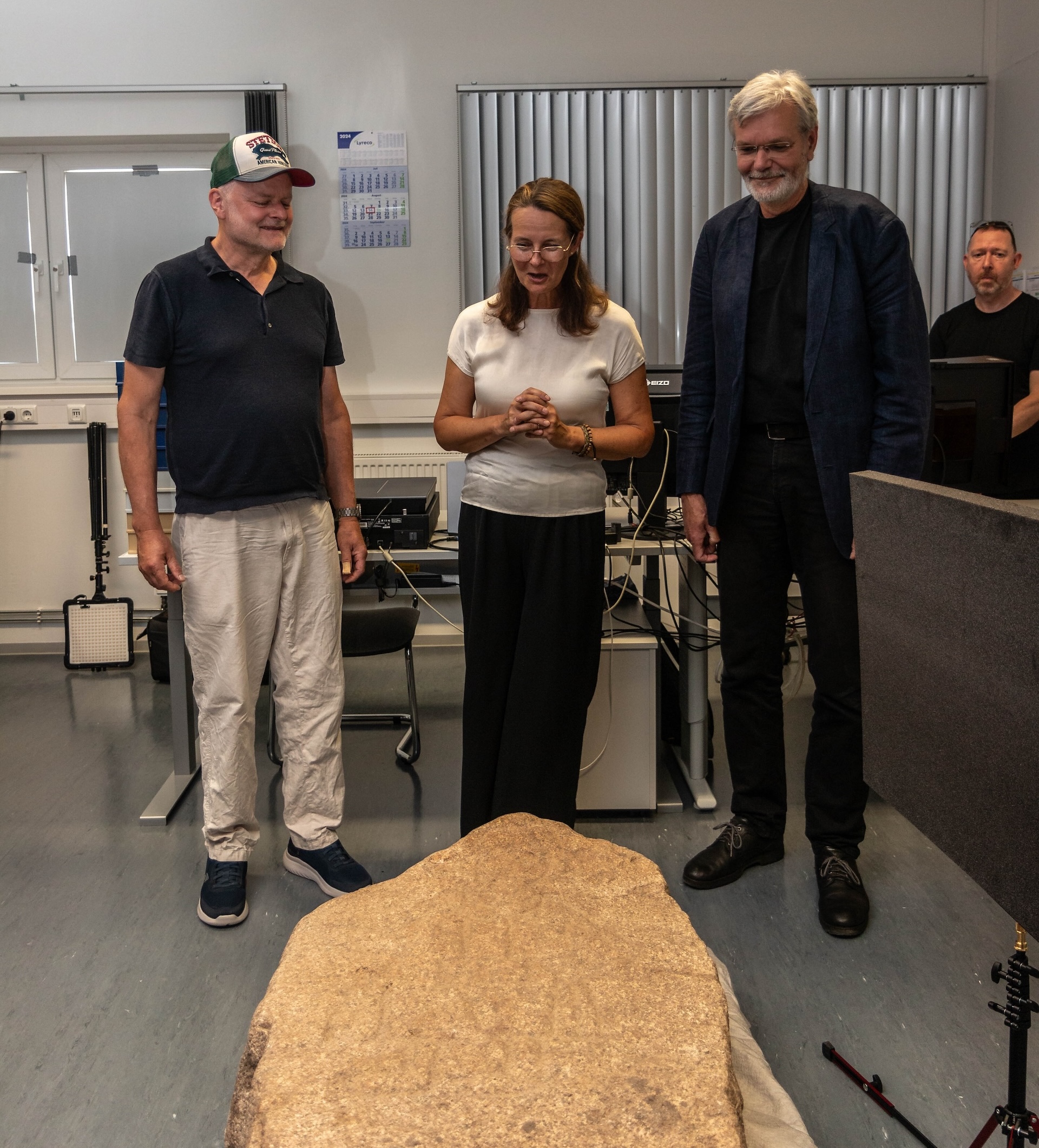'Absolutely outstanding' 12-century picture stone unearthed in Germany likely depicts bishop who brought Christianity to region
A 12th-century stone carving discovered in northern Germany may depict Otto of Bamberg, a bishop and missionary.

A man doing home construction in Germany has discovered a rare boulder with a 12th-century carving — a "picture stone" that may depict a Christian bishop who visited the area around 800 years ago.
The medieval find is a "sensation," as there are only about 20 other known picture stones in the region, Detlef Jantzen, chief archaeologist of Mecklenburg-Vorpommern, the state where it was found, told Live Science. Known in German as "bildstein," these stones have been found along the Baltic coast in parts of what is now Germany and Poland. While they vary in style and form, they typically show people with a few identifying attributes, such as clothing.
The newfound carving may depict Otto of Bamberg (lived 1060 to 1139), a bishop who served royalty and a missionary who sought to convert people in Pomerania, which is now part of Germany and Poland.
"Whether the bildstein is showing Otto or not: This is an absolutely outstanding find, that leads us back to the time when Christian religion first came to Pomerania, brought by Otto, who is at the same time famous for his success to negotiate peace between the Polish duke and the Pomeranian nobility," Jantzen, who also works with the State Office for Culture and Monument Preservation, told Live Science in an email.

The stone was found in August, when Peter Wittenberg, a homeowner in the village of Klotzow, began moving soil by his house so he could reach its foundation. He found the 3-foot-long (1 meter) boulder just below the ground's surface, but he only realized it was "something special" when he saw that it had a "very old fashioned carving," Jantzen said.
Related: Rare cross-shaped reliquary unearthed from medieval knight's home in Poland
Wittenberg's architect connected with an art historian, and soon, news of the "outstanding find" spread to the state archaeological office, which brought it to a laboratory to examine, Jantzen said.
Sign up for the Live Science daily newsletter now
Get the world’s most fascinating discoveries delivered straight to your inbox.
Based on the granite carving's decoration and symbols, the team dated it to the 12th century. It shows an "upright standing person, clad with a kind of cap, a shawl, a short robe and maybe shoes," Jantzen said. "In its right hand the person is bearing something that looks like a banner. The face is not depicted in detail, but the eyes are clearly visible and maybe the hair is protruding from under the cap."
But it's one particular detail — a carved cross at the "loose hanging end of the shawl" — that stands out, as it's the only known picture stone with a cross on it, Jantzen said.
A few details, including the cross, suggest the carved individual is Otto. It's possible the shawl and cross are a pallium, a religious cloth worn by popes, archbishops and very honorable bishops, Jantzen said. Written sources detail that in 1111, "Otto received the pallium from pope Paschalis II," Jantzen said, adding that "when Otto was traveling in Pomerania in 1124 and 1128, he was the first and only possible bearer of a pallium at that time in that area."
What's more, Otto probably passed through Klotzow on his journeys in the area, Jantzen noted.
While it's unknown what purpose picture stones served, ideas include that they stood upright as a type of remembrance of an individual and some may have been tombstones.
Once the team's analysis of the picture stone is complete, they hope to put it on permanent display in the village where it was recovered, Jantzen said.

Laura is the archaeology and Life's Little Mysteries editor at Live Science. She also reports on general science, including paleontology. Her work has appeared in The New York Times, Scholastic, Popular Science and Spectrum, a site on autism research. She has won multiple awards from the Society of Professional Journalists and the Washington Newspaper Publishers Association for her reporting at a weekly newspaper near Seattle. Laura holds a bachelor's degree in English literature and psychology from Washington University in St. Louis and a master's degree in science writing from NYU.










